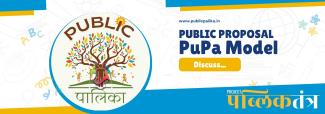A White Paper on Public Palika
Public Palika is a civic innovation framework that seeks to address systemic corruption and economic inefficiency in India’s democratic model—not by replacing existing structures, but by augmenting them through economic decentralization and participatory budgeting. It proposes a fourth functional pillar of democracy rooted in community representation and fiscal accountability. Anchored in the philosophy of Lifeconomics (developed by independent researcher Sukant Kumar), the Public Palika model introduces a bottom-up economic governance system operating in parallel with the legislative, executive, and judicial pillars.









